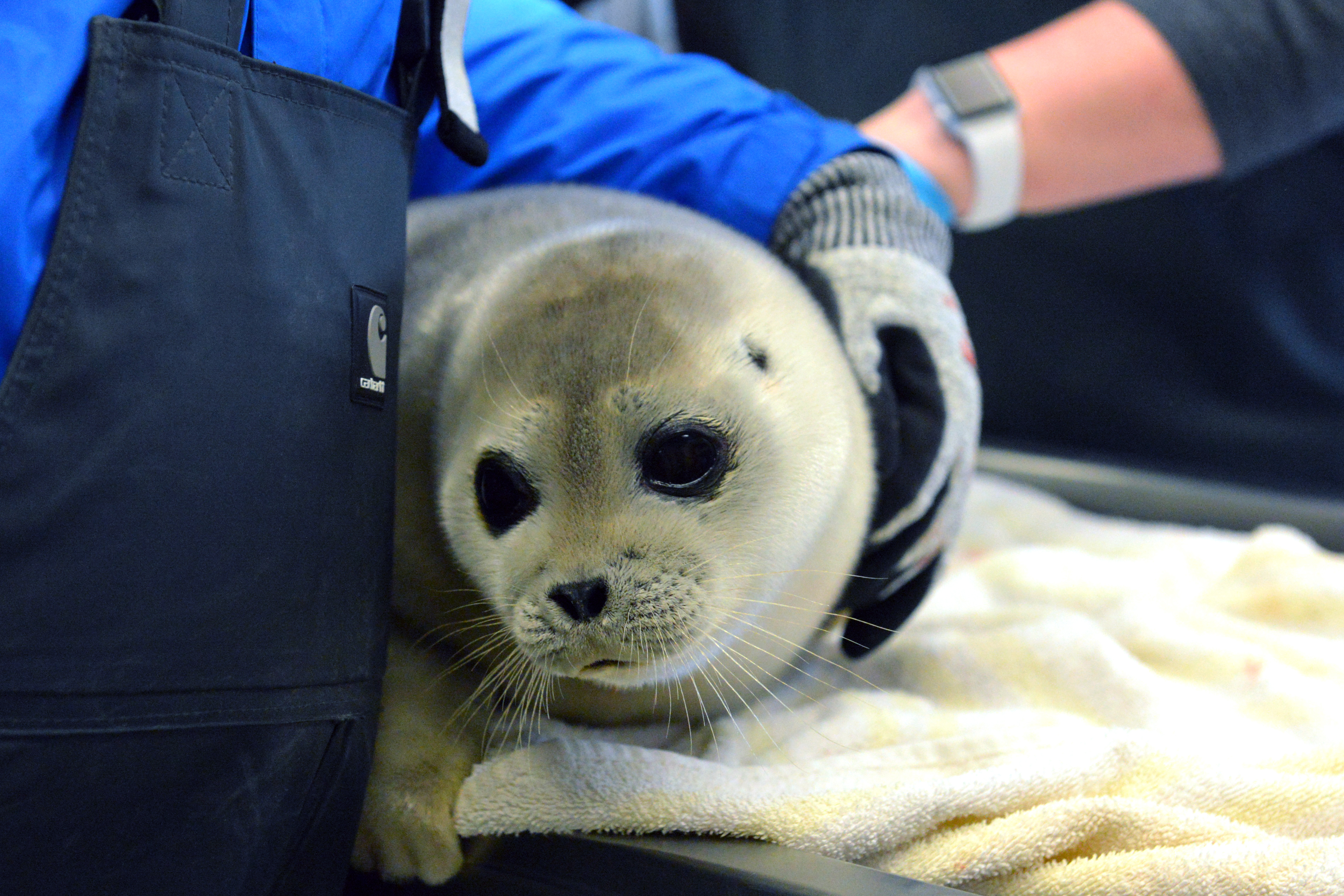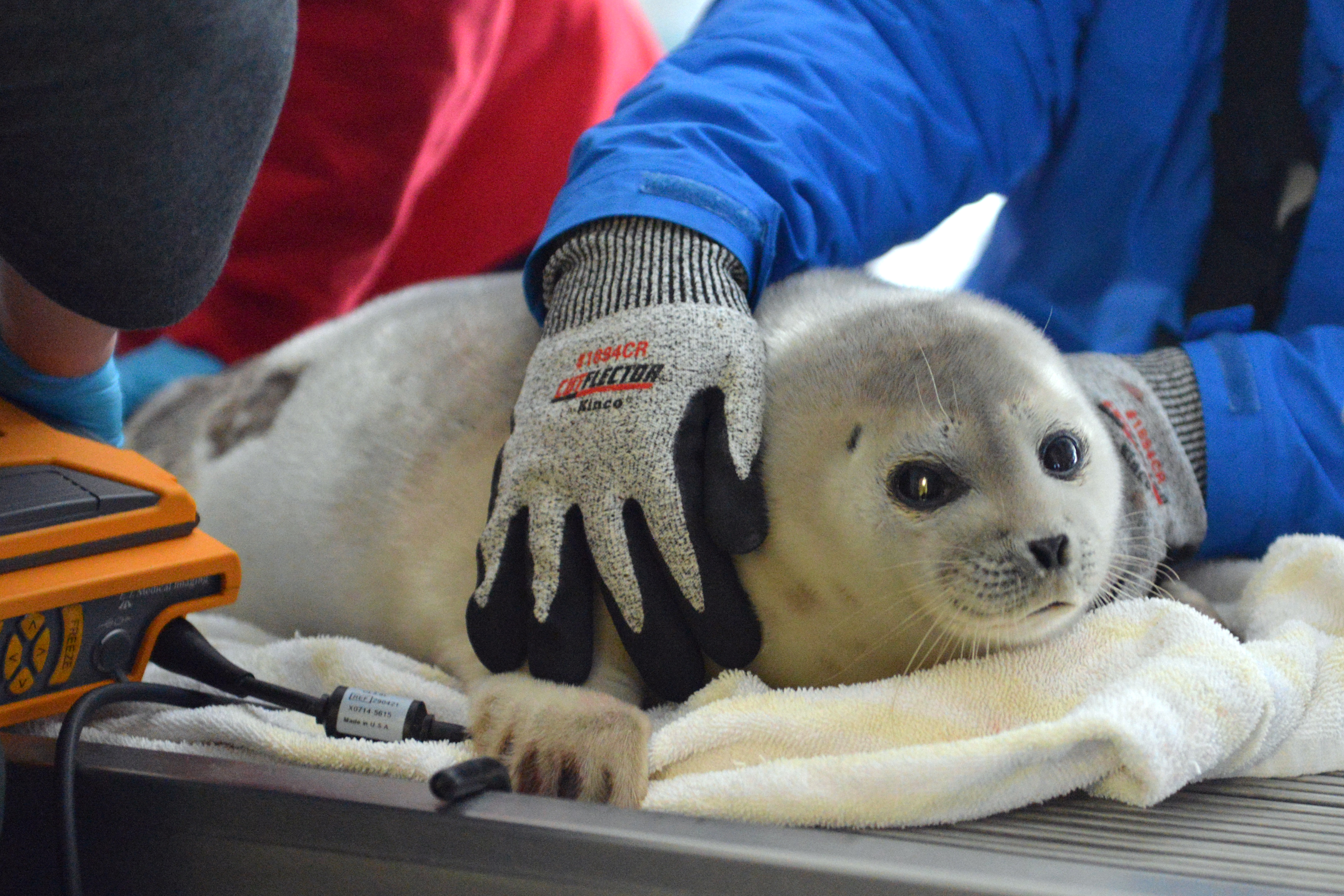Stranded, lethargic ringed seal found far south of normal icy habitat

The rescue season for Alaska marine mammals officially got underway with the year’s first ailing animal, a stranded ringed seal, getting treatment at the Alaska SeaLife Center.
The young female seal was found in late February at Dutch Harbor, about 250 miles south of the species’ normal icy range, the SeaLife Center said.
Although there were no injuries or abnormalities, the seal became increasingly lethargic and appeared to avoid the water, the center reported.
Once approval came from the National Oceanic and Atmospheric Administration, an agency that oversees marine mammals, the seal was flown to Anchorage and arrived on March 3 at the Seward center, a facility that combines research, rehabilitation and tourism services.
The seal was underweight and infested with far more than the normal load of intestinal and lung parasites, said Carrie Goertz, staff veterinarian at the SeaLife Center.
The Alaska range of ringed seals stretches from the Beaufort Sea to the northern Bering Sea, according to the Alaska Department of Fish and Game. Just why this animal was so far off-course is unclear, Goertz said. “We have no idea,” she said.
There are still parasites in the animal’s lungs, even a month after the rescue, Goertz said. “We’re guardedly optimistic, but at the same time recognizing that she still has a lot of hurdles to go,” she said.

Because the yet-unnamed seal is out of her natural range, she cannot be returned to the wild, according to NOAA policies, the SeaLife Center said. The animal will stay at the Seward facility until another home is found, the center said.
While the marine mammal rescue season used to be largely limited to the summer, that is no longer the case, SeaLife Center officials said.
The last three years have been particularly busy. There were 65 marine-mammal response, rescue or recovery cases in 2014, Goertz said. The total jumped to 178 in 2015, and the same number was tallied again last year, she said. Much of that resulted from a “large uptick” of sea otter cases, she said. Many of those animals were found dead, she said.
Unusually warm waters and algal blooms get some of the blame for the recent years’ increase in marine-mammal emergencies, Goertz said.